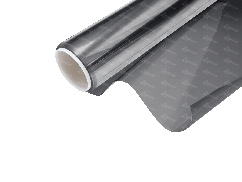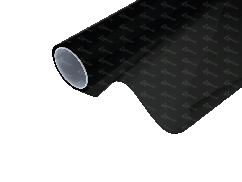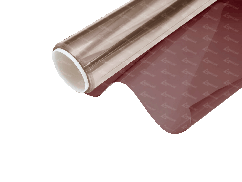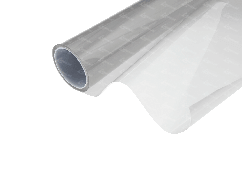State-Specific Automotive Window Tint Regulations – Know Before You Tint
Did you know that window tinting laws vary from state to state? In the United States, each state sets its own legal limits for Visible Light Transmission (VLT%), determining how dark your vehicle’s windows can be. Non-compliance with these regulations can result in fines or the need to remove non-conforming tint.
To ensure your vehicle meets legal tinting standards, refer to the state-specific regulations below.
Why Are Tint Laws Important?
- Driver & Passenger Safety – Prevents reduced visibility at night or in bad weather.
- Law Enforcement Compliance – Ensures windows remain legally transparent where required.
- Medical Exemptions – Some states allow darker tints for individuals with medical conditions.
- Fines & Legal Consequences – Illegal tints can result in fines, warnings, or required removal.
Before applying window tint to your vehicle, check the current regulations in your state!
Automotive Tint Laws by State
Below is a comprehensive table detailing the legal limits for automotive window tinting across all U.S. states. Please note that regulations can change, so it's essential to consult your state's Department of Motor Vehicles (DMV) or other official sources for the most current information.
| State | Windshield | Front Side Windows | Rear Side Windows | Rear Window |
|---|---|---|---|---|
| Alabama | 6" Tint Strip | 32% VLT | 32% VLT | 32% VLT |
| Alaska | 5" Tint Strip | 70% VLT | 40% VLT | 40% VLT |
| Arizona | 6" Tint Strip | 33% VLT | Any | Any |
| Arkansas | 5" Tint Strip | 25% VLT | 25% VLT | 10% VLT |
| California | 4" Tint Strip | 70% VLT | Any | Any |
| Colorado | 4" Tint Strip | 27% VLT | 27% VLT | 27% VLT |
| Connecticut | Above AS-1 Line | 35% VLT | 35% VLT | 35% VLT |
| Delaware | Above AS-1 Line | 70% VLT | 70% VLT | 70% VLT |
| Florida | AS-1 Line | 28% VLT | 15% VLT | 15% VLT |
| Georgia | 6" Tint Strip | 32% VLT | 32% VLT | 32% VLT |
| Hawaii | 4" Tint Strip | 35% VLT | 35% VLT | 35% VLT |
| Idaho | AS-1 Line | 35% VLT | 20% VLT | 35% VLT |
| Illinois | 6" Tint Strip | 35% VLT | 35% VLT | 35% VLT |
| Indiana | AS-1 Line | 30% VLT | 30% VLT | 30% VLT |
| Iowa | 70% VLT | 70% VLT | 70% VLT | 70% VLT |
| Kansas | AS-1 Line | 35% VLT | 35% VLT | 35% VLT |
| Kentucky | AS-1 Line | 35% VLT | 18% VLT | 18% VLT |
| Louisiana | 5" Tint Strip | 40% VLT | 25% VLT | 12% VLT |
| Maine | 4" Tint Strip | 35% VLT | 35% VLT | 35% VLT |
| Maryland | 5" Tint Strip | 35% VLT | 35% VLT | 35% VLT |
| Massachusetts | 6" Tint Strip | 35% VLT | 35% VLT | 35% VLT |
| Michigan | 4" Tint Strip | Any | Any | Any |
| Minnesota | No Tint Allowed | 50% VLT | 50% VLT | 50% VLT |
| Mississippi | AS-1 Line | 28% VLT | 28% VLT | 28% VLT |
| Missouri | AS-1 Line | 35% VLT | 35% VLT | 35% VLT |
| Montana | 4" Tint Strip | 24% VLT | 14% VLT | 14% VLT |
📌 Key Terms:
- VLT% (Visible Light Transmission Percentage) – The amount of light allowed through the tint. Lower percentages mean darker tint.
- "Any" – No specific legal limit for tint darkness.
- "AS-1 Line" – A marking on most windshields that determines where tinting is allowed.
🔗 For a complete and updated list of U.S. window tint laws, visit: IWFA Interactive Tint Laws
Medical Exemptions & Additional Restrictions
Some states offer medical exemptions for individuals with conditions requiring UV protection. Additional restrictions may also apply to:
- 🔹 Reflective or mirrored tints (some states ban excessive reflectivity).
- 🔹 Tint colors (certain states prohibit red, blue, or amber tints).
- 🔹 Side mirrors (if rear windows are tinted, some states require dual side mirrors).
Check with your state DMV for special exemptions or restrictions.
Stay Compliant & Enjoy Legal Window Tinting!
Before tinting your vehicle’s windows, ensure compliance with local laws to avoid fines or legal issues. Our expert team at Armolan USA is happy to help you choose a film that meets your state’s requirements.
📞 Call us: +1 855-946-3456
📧 Email us: info@armolan.com

Sun protection films

Automotive films

Architectural films

